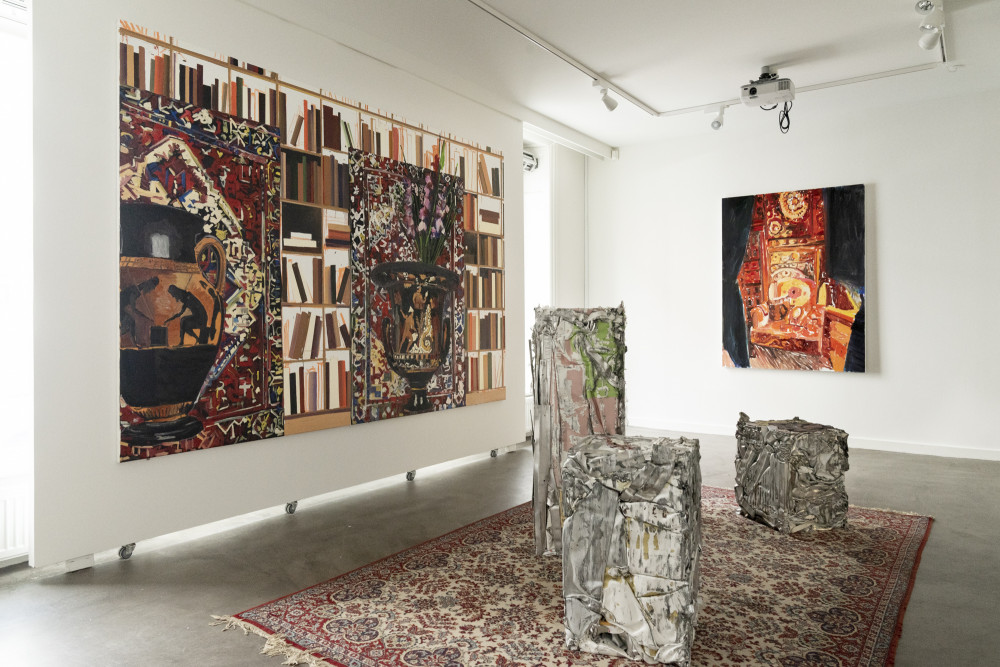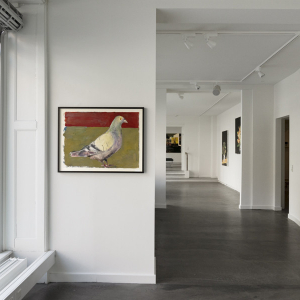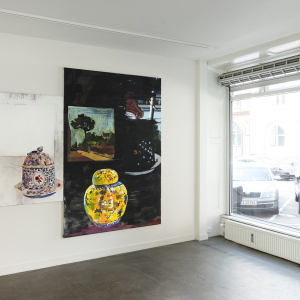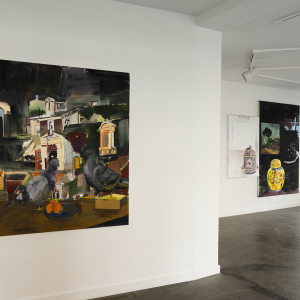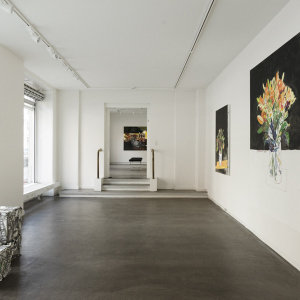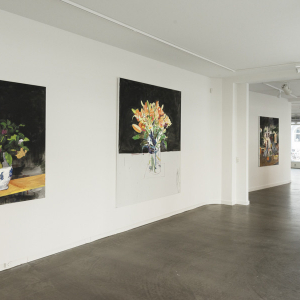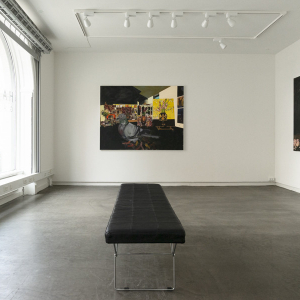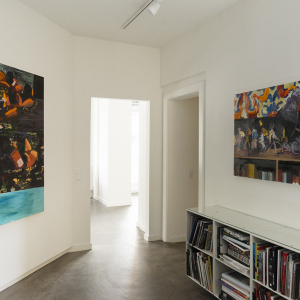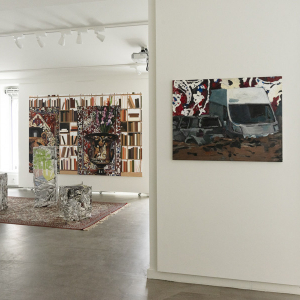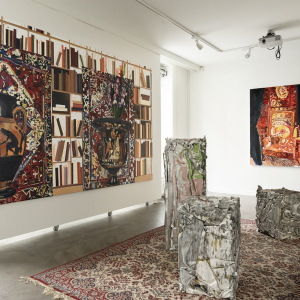Friday August 13, Hans Alf Gallery celebrates the opening of Erik A. Frandsen's new exhibition “Duerne fra Rom (The Pigeons of Rome)”.
“The Pigeons of Rome” is a sequel to Erik A. Franden’s critically acclaimed – and utterly unplanned – “Quarantine Images” from 2020. While the latter materialized as a spontaneous reaction to the sense of crisis and existential uncertainty brought on by the corona pandemic, Franden's new body of works delves deeper into what are best described as mediations on the current situation of society. It’s the work of an artist, who has had time to digest and step away from his easel and is now ready to once again put a pencil to the canvas and try to channel his impressions.
According to Frandsen, the exhibition is about a fundamental disruption of the old order - something, which he believes the corona pandemic has accelerated and helped expose. Basically, the world as we knew it doesn't exist anymore, and the societies and structures that we used to think of as indestructible, have proven far more fragile than we ever imagined. Everything is dissolving – both around us and in Frandsen’s paintings.
While in “Quarantine Images”, the artist had reached a point, where he didn’t ‘just’ paint flowers or rooms with flowers in them but now also placed historical artefacts and artworks in these very rooms - a beautiful, but also quite private and intellectual exercise – in “The Pigeons of Rome”, reality has started to invade Frandsen's motives like mighty bodies of water or Southern European mudslides. Or like pushy, intrusive pigeons.
While life was lived from a distance, and Frandsen watched as his unfinished greenhouse was being invaded by pigeons, to Frandsen, this animal gradually became the very symbol of an existential conflict between illness and anxiety on one hand, and freedom and hope on the other. Pigeons invade our cities and defecate all over our infrastructure. They carry all sorts of illnesses and eat everything in their way. But they are also brilliant at adapting to new circumstances. They are urbanized, yet free. No matter what metropolitan city you travel to, you’ll be sure to find pigeons on its streets and squares. Maybe the pigeon is not just a representation of all things disgusting and annoying, but also a symbol of hope: An animal - unlike humans - who will always survive and adapt to new circumstances.
In the proces of creating “The Pigeons of Rome”, Frandsen also revisited artworks from his earlier production, and here, especially “Family” from the late 90s - a series of enamel paintings on aluminium, where the painter’s young family is depicted in mundane situations - had taken on a completely new meaning. After having studied the series for a period of time, Frandsen decided to once and for all transform the works. With the help of a demolition yard, the artist transformed the series into five massive cubes of compressed aluminium. On an extremely tangible level, these works demonstrate the disruption and transformation of both private and social structures. The sculptures, as well as a video installation documenting the process, will also be part of the exhibition.
